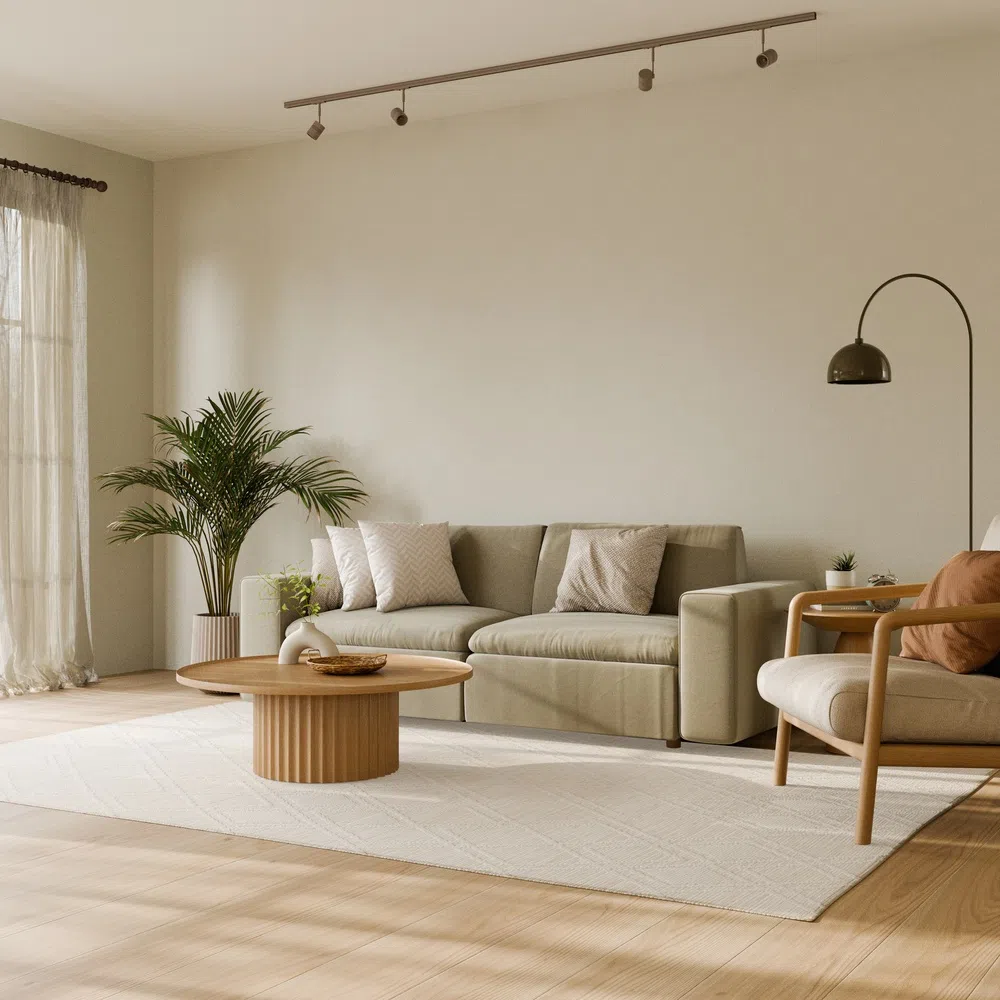Nature is essential for our well-being, making it no surprise that integrating natural elements into home design is growing in popularity. Besides providing unique beauty, these elements bring a timeless charm to the home and boost your comfort.
Whether you’re updating your living room or designing from scratch, here’s a quick guide to why natural elements are a must in home design and how to use them to create a welcoming, restful space.
1. Introduce Natural Wood Accents
Wood adds warmth and character to any room, no matter the size. From oak dining tables to walnut picture frames, wood brings depth and texture, creating a rustic charm that connects spaces.
Choose handcrafted furniture that beautifully displays the natural grain, emphasizing unique patterns and gentle color shifts. Alternatively, consider installing hardwood flooring for a sturdy, stylish base that blends durability with timeless elegance.
2. Use Stone for Timeless Elegance
Natural stone symbolizes sophistication and strength, making it a timeless choice for both interior and exterior design. Use marble or granite for durable, easy-to-clean kitchen countertops.
Incorporate slate and limestone tiles on walls or floors for unique, resilient accents. Their varied textures and colors—from black and whites to warm earth tones—offer endless modern design options that are grounded and customizable.
3. Bring Plants Into Your Space
Greenery reinvigorates indoor spaces by purifying the air and brightening bland corners. Choose low-maintenance options such as succulents or snake plants for easy upkeep, or make an impact with large-leafed favorites like a fiddle-leaf fig. Indoor hanging plants, terrariums, or vertical gardens further create lush, lively environments.
4. Choose Natural Fibers for Decor
Rugs, throw pillows, and lampshades made from jute, hemp, and cotton add both texture and charm to your interiors. These tactile fabrics soften the room’s overall feel while evoking references to outdoor landscapes. Neutral tones often found in natural fibers integrate seamlessly with diverse color palettes, enabling a cohesive aesthetic.
5. Accent with Water Features
A small indoor fountain or a tabletop waterfall fosters tranquility through rhythmic sounds that gently ripple and cascade, creating a soothing ambient noise. Water elements serve as both visual and auditory anchors, their shimmering surfaces and flowing motions enhancing the peaceful atmosphere. Compact water features make an excellent addition, even in smaller homes or apartments, bringing a touch of nature indoors and promoting relaxation.
6. Maximize Natural Light
An often-overlooked natural design element, light transforms a space while boosting functionality and lifting spirits. You can maximize the lighting by arranging furniture near windows to increase natural light, brightening the room and creating an inviting atmosphere.
Use sheer drapes to diffuse sunlight and add a touch of elegance. Position mirrors opposite windows to reflect light and create a sense of spaciousness. Natural light increases depth perception, accentuates features, elevates mood, promotes well-being, and can decrease energy expenses by minimizing reliance on artificial lighting.
7. Blend Indoor and Outdoor Spaces
Blur the lines between your home and the outdoors by incorporating transitional areas, such as patios or indoor gardens. Sliding glass doors, retractable walls, or floor-to-ceiling windows allow nature to flow inside effortlessly. This seamless blend of indoor and outdoor creates visual harmony and fosters a connection to nature.
By integrating natural elements into your home, you cultivate a mindful connection to nature while enhancing the appeal of your living space. Natural accents elevate your interiors and provide serenity that’s hard to replicate.
Image Credentials: Photographer: Washdog File #: 1231576321





Comments